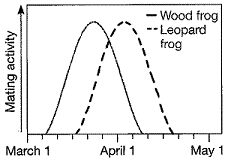Parental care of offspring:a
for many animals has a lower cost than benefit.
b. results in a decreased probability that each offspring will survive.
c. is more common in species in which the female produces two or more times during a breeding season.
d. is more common among male animals than among females.
e. is more common among male fishes than among females.
e
You might also like to view...
Select all of the following that represent examples of taxis.
_____ In the Northern Hemisphere, Aquaspirillum bacteria burrow towards the magnetic north pole (the geographical south pole). _____ Cyanobacteria filaments in an intertidal environment migrate upward if salinity falls below 15% and downward if it rises above 15%. _____ Mammalian spermatozoa are guided toward an oocyte by a temperature gradient between the cooler sperm storage site and the fertilization site. _____ Human body lice change direction more frequently as the temperature of their immediate environment increases.
Imagine you were the manager of a national park with cheetahs. The cheetahs feed primarily on gazelles, while the gazelles eat grass. It takes an acre of grassland to feed one gazelle, and it takes ten gazelles to feed one cheetah
You have a maximum of ten cheetahs when the system is functioning optimally. You would like to increase the cheetah population because people pay money to see the cheetahs. How much grassland do you need to double the cheetah population supported by this grassland? A) 500 acres B) 200 acres C) 100 acres D) 10 acres
Based on the data in the figure, which is a likely reason for speciation between these two sympatric species of frogs?
a. allopolyploidy
b. habitat isolation
c. hybrid inviability
d. temporal isolation
e. mechanical isolation
Early animal embryos are composed of stem cells, unspecialized cells that are capable of dividing and renewing themselves for long periods
If a stem cell divides by mitosis so that one cell eventually becomes part of the brain and the other cell becomes part of a salivary gland, the cells have A) differentiated. B) diffused. C) taken up genes from surrounding cells. D) lost genes. E) increased their genetic variability.